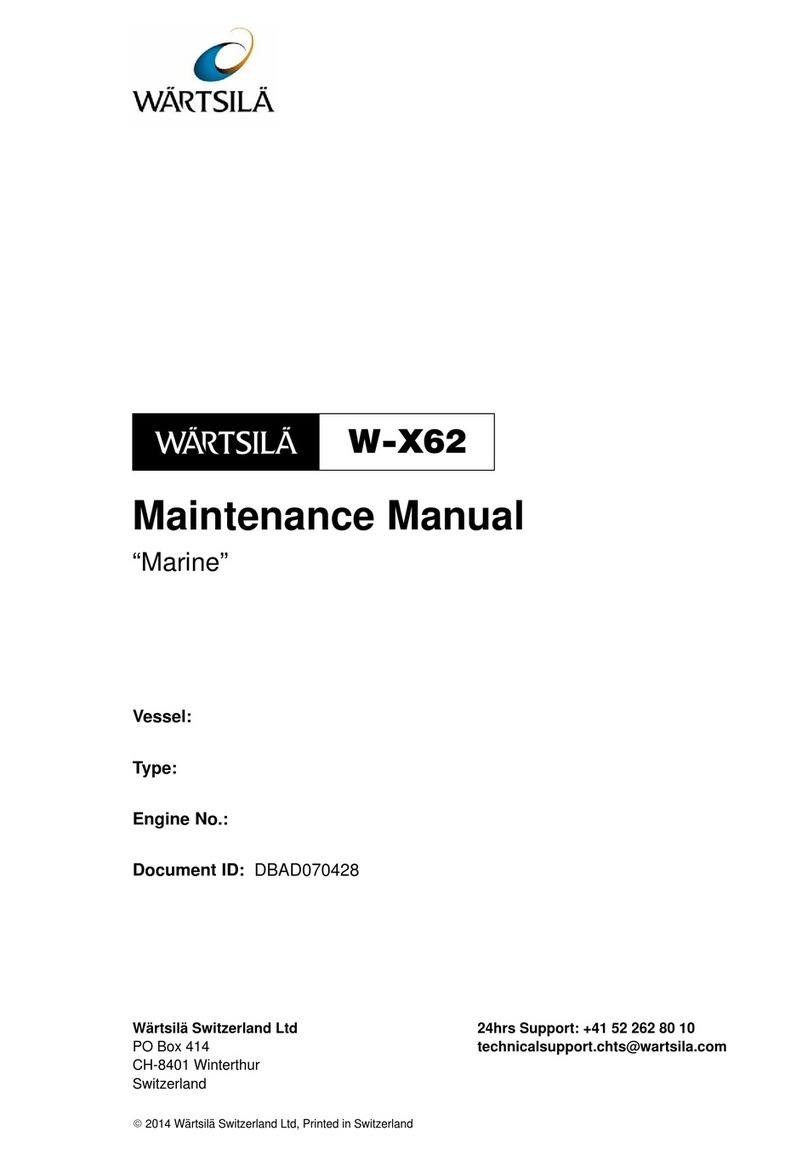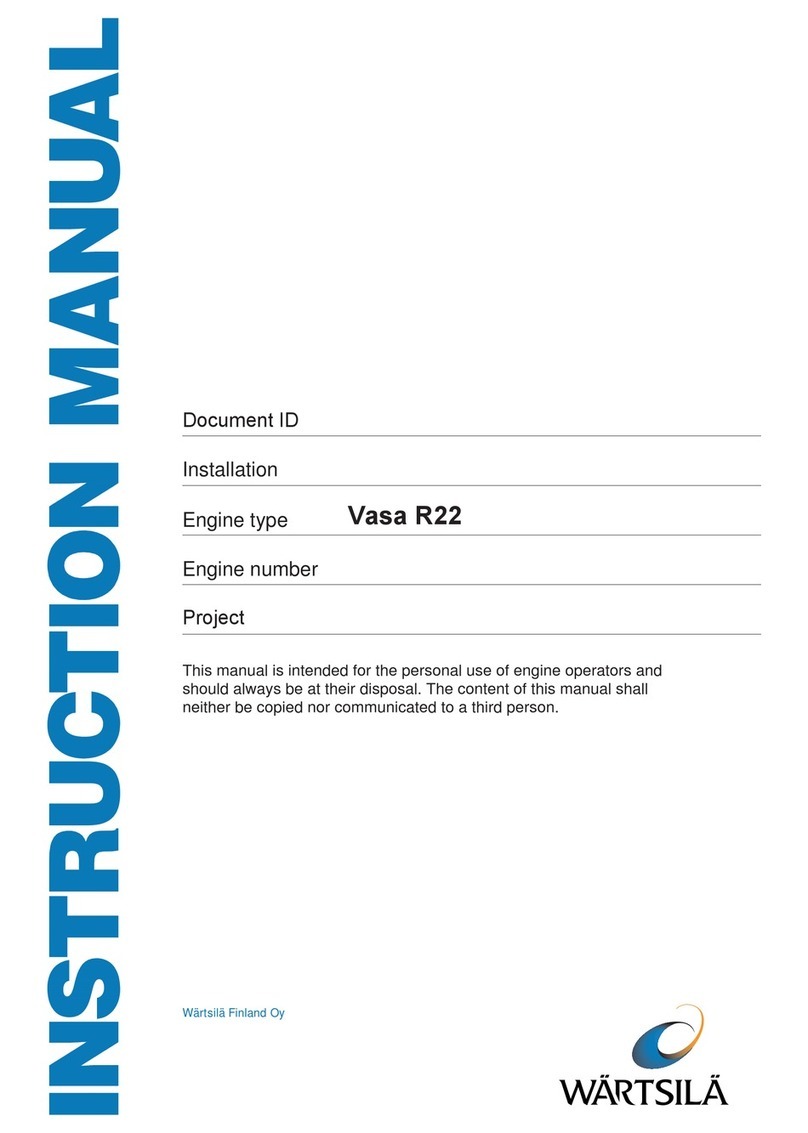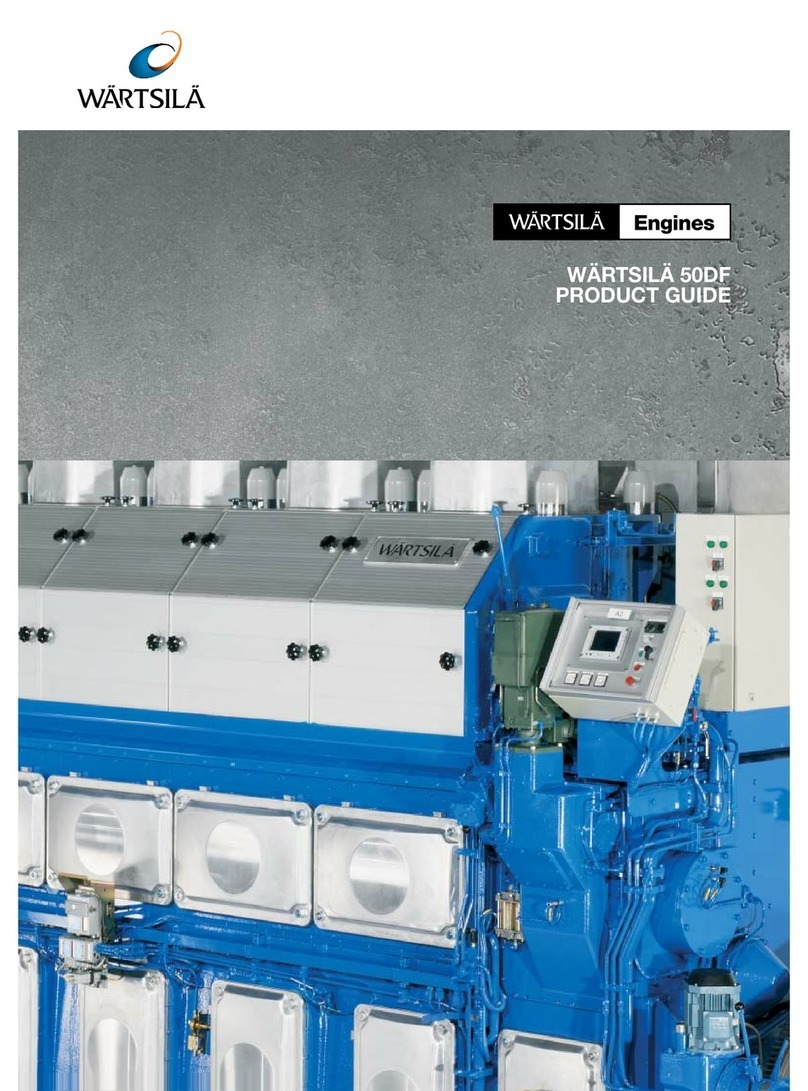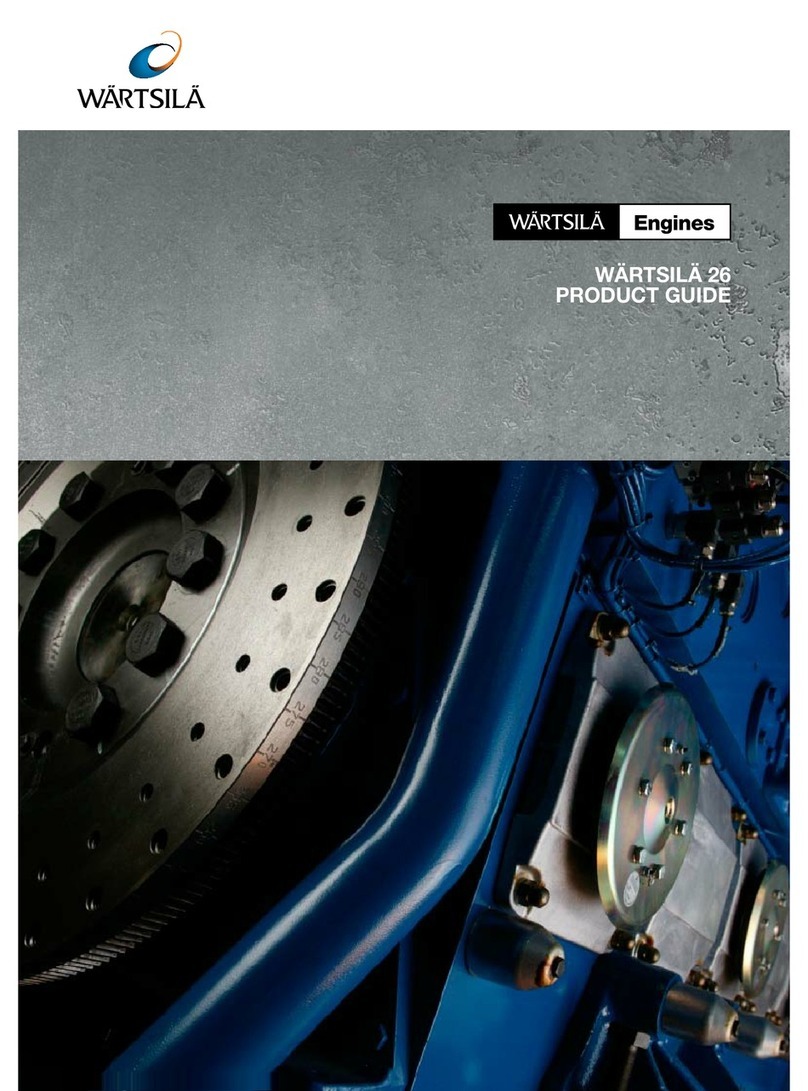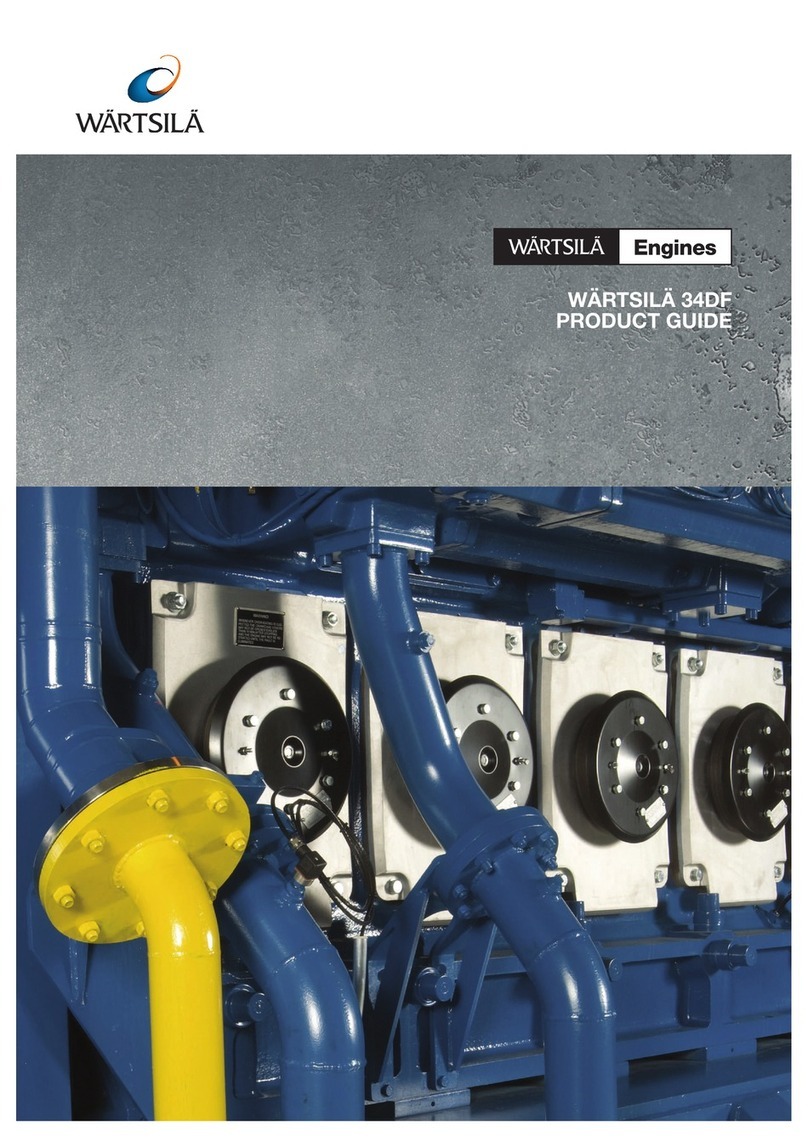
00. Contents, Instructions, Terminology
00.1 Contents of the Manual
This Manual contains data and instructions for operation and mainte-
nance of the engine as well as instruction for handling, personal
protection and first aid when fuel-, lubricating oils and cooling water
additives are handled during normal operation and maintenance work.
Basic general knowledge has not been entered. Consequently,
it is assumed that the engine operation and maintenance staff is
well informed of the care of diesel engines.
Wärtsilä reserves for itself the right to minor alterations and
improvements owing to engine development without being
obliged to enter the corresponding changes in this Manual.
The diesel engines will be equipped as agreed upon in the sales
documents. No claim can be made on the basis of this Manual as
here are described also components not included in every delivery.
The system diagram plans (fuel, oil, cooling etc.) are just indica-
tive and thus do not cover all installations. See installation
specific system drawings for more details.
Exact engine build-up in all details is defined by the specification
number on the name plate located on the engine. In all correspon-
dence or when ordering spare parts, be careful to state
engine type, specification number and engine number.
This Manual is supplemented by the Spare Parts Catalogue
including sectional drawings or exterior views of all components
(partial assemblies).
00.2 General rules
1 Read the corresponding item carefully in this Manual
before any steps are taken.
2 Keep an engine log book for every engine.
3 Observe the utmost cleanliness and order at all main-
tenance work.
4 Before dismantling, check that all systems concerned are
drained or the pressure released. After dismantling, immedi-
ately cover holes for lubricating oil, fuel oil and air with tape,
plugs, clean cloth or the like.
32-200328-03 Contents, Instructions, Terminology 00
WÄRTSILÄ 32 00 - 1
